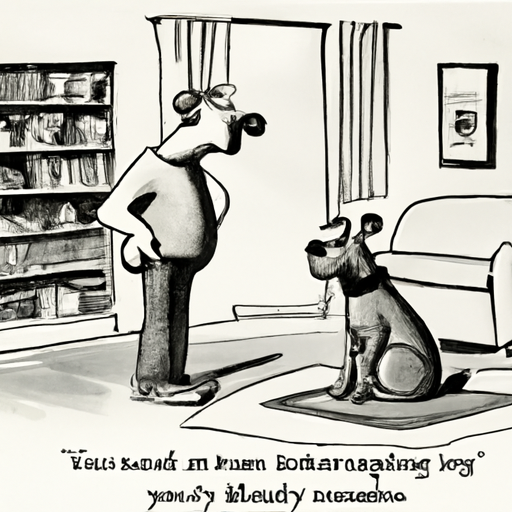As a caregiver to your furry friend, you might have noticed your dog scooting its bottom across the floor. While it might seem amusing or peculiar, it could be a sign of a health issue that needs your attention. This article will delve into the reasons behind this behavior and guide you on what to do.
1. Understanding the Behavior
When your dog drags its bottom on the floor, it is known as ‘scooting.’ Dogs do this to relieve discomfort, itchiness, or irritation around their anal region. It’s important to remember that scooting isn’t a disease itself but a symptom of underlying issues.
2. Common Causes of Scooting
Here are some common causes of scooting:
- Anal Sac Disorders: Dogs have two small sacs on either side of their anus, which release a scented secretion when they defecate. Sometimes these sacs can become blocked, inflamed, or infected, leading to discomfort.
- Parasites: Worms or other tiny parasites can irritate a dog’s anus, causing them to scoot.
- Allergies: Dogs can also react to allergens in their food or environment, which may cause skin irritation around their anus.
- Injury or Infection: Any injury, rash, or infection near a dog’s anal region can lead to scooting.
3. Recognizing the Signs
Table 1. Signs that your dog might be experiencing discomfort:
|Signs|Description|
|—|—|
|Excessive licking or biting at the rear|This could indicate irritation, infection, or the presence of fleas.|
|Swelling or redness around the anus|This might be a sign of an anal sac disorder or infection.|
|Changes in bowel movements|This could suggest gastrointestinal issues.|
4. What to Do When Your Dog Scoots
It’s essential to consult a vet if your dog begins to scoot. They will help determine the cause and provide appropriate treatment. This could range from expressing the anal sacs to prescribing medication for allergies or parasites.
5. Prevention and Management
- Regular vet check-ups can help catch any potential issues early.
- A balanced diet can help prevent anal sac and gastrointestinal problems.
- Regular grooming and flea prevention can help avoid skin irritation and infections.
Frequently Asked Questions
Q: How common is scooting in dogs?
A: Scooting is quite common in dogs, especially those with allergies or prone to anal sac disorders.
Q: Should I try to express my dog’s anal sacs myself?
A: No, it’s best to let a vet or a professional groomer do this to avoid causing injury.
Q: Can scooting be prevented?
A: Regular vet check-ups, a balanced diet, and good grooming practices can minimize the chances of your dog needing to scoot.
By understanding why your dog might be scooting and knowing how to respond, you can ensure your pet stays comfortable and healthy. Remember, as a caregiver, your attention and prompt action can make all the difference in your dog’s well-being.



